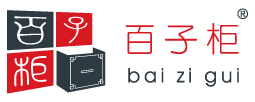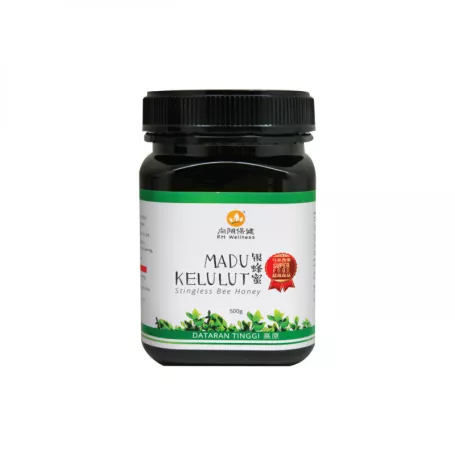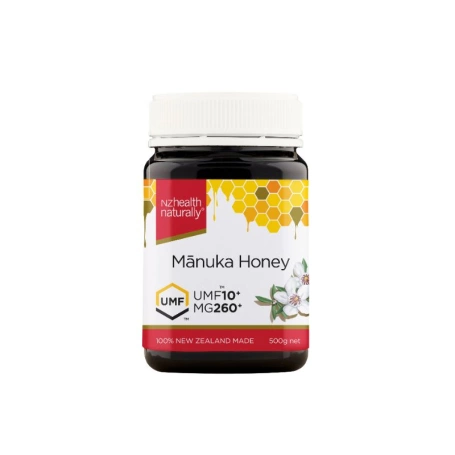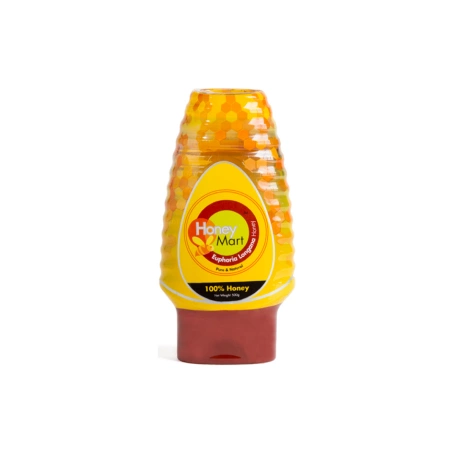Authenticity and Quality of Honey: How to Distinguish Real from Fake

Honey: A Versatile Natural Sweetener with Numerous Health Benefits
Honey is a natural sweetener that has been widely used in cooking, skincare, and home remedies since ancient times. As a gift from nature, honey not only offers a sweet taste but is also packed with vitamins, minerals, antioxidants, and natural enzymes, which provide numerous health benefits. Studies have shown that honey can boost immunity, aid digestion, soothe the lungs, relieve coughs, and possess antibacterial and antioxidant properties. Due to its natural composition, honey is also commonly used in skincare, helping to keep skin moisturized and smooth.
However, despite honey’s numerous benefits, the market is flooded with both genuine and fake honey products that are hard to differentiate. With the rise in demand, counterfeit honey and adulterated honey products have emerged. For consumers, understanding how to distinguish between real and fake honey, as well as evaluating its quality, is crucial.
Why Understanding Honey’s Authenticity and Quality is Important
As the health benefits of honey have become widely known, the demand for honey products has skyrocketed. However, with this increase in demand, the number of fake honey products has also surged. Some sellers may mix sugar syrup or other ingredients with honey to cut costs, passing it off as pure honey. Fake honey not only fails to provide the health benefits of natural honey but can also pose health risks. Therefore, knowing how to verify honey’s authenticity and assess its quality is essential to ensure we can enjoy high-quality honey in our daily lives.
How to Identify Real and Fake Honey
Identifying genuine honey can be a challenge for consumers. Fake honey may look similar to real honey on the surface, but its nutritional content and health benefits are far from comparable. Here are some common methods that can help consumers better distinguish between real and fake honey:
1. Visual Inspection: Differences in Color and Transparency
The color of natural honey can vary depending on the type of flower nectar, ranging from pale yellow to deep amber. However, the transparency of honey can be an important indicator. Natural honey is typically slightly cloudy or not completely transparent, especially if it is unprocessed. It may contain small amounts of pollen, beeswax, and other natural components. On the other hand, fake honey, which often contains added sugar syrup or other artificial ingredients, tends to appear much clearer and more transparent.
2. Taste Test: The Aroma and Flavor of Natural Honey
Natural honey has a distinctive aroma and complex flavor, often with a noticeable floral fragrance and natural sweetness. When tasted carefully, high-quality honey leaves a lingering taste that is neither too overpowering nor cloying, with a hint of acidity or spice in the aftertaste. In contrast, fake honey often has a flat, one-dimensional sweetness, lacking the depth of flavor and floral notes found in natural honey.
3. Experimental Tests: Dissolving in Water or Burning with Fire
There are a few simple experiments that can quickly help differentiate real from fake honey:
-
Water Dissolving Test: Add a small spoonful of honey into a glass of water. Natural honey, due to its higher content of natural enzymes and components, will slowly sink to the bottom without dissolving immediately. Fake honey, which is usually made from sugar syrup, will dissolve quickly and completely in the water.
-
Burning Test: Dip a cotton swab into a small amount of honey and try lighting it. Natural honey has a low water content and should burn without bubbling or smoking. Fake honey, which contains additives or a higher water content, will struggle to burn.
Factors that Determine the Quality of Honey
The quality of honey is influenced by several factors, including its source, harvesting time, and processing methods. Understanding these factors can help us better evaluate the quality of honey.
1. Source: Different Regions, Different Standards of Honey
Honey from different regions can vary significantly in terms of taste, color, and nutritional content. For example, Manuka honey from New Zealand is renowned globally for its high antibacterial activity and is considered to have significant medicinal value. Meanwhile, longan honey from China is favored for its rich floral fragrance and deep color. The source of honey plays a crucial role in determining its quality.
2. Harvesting Time: Influence on Sugar and Nutrient Content
The time of harvest also directly impacts the quality of honey. Honey harvested in the spring typically contains more nectar and moisture, while honey harvested in the summer or autumn tends to be thicker, with higher sugar and nutrient content. Different harvest times can also affect the flavor and shelf life of honey. Consumers should select honey based on their personal needs and preferences.
3. Processing Methods: The Difference Between Raw and Processed Honey
Unprocessed raw honey retains more of its natural nutrients and enzymes, making it superior in terms of both flavor and health benefits compared to honey that has been heat-treated. Processed honey is often heated to extend its shelf life, but this also destroys many of the beneficial enzymes, vitamins, and antioxidants found in raw honey. As a result, raw honey is considered to be one of the highest-quality types of honey because its natural state is preserved.
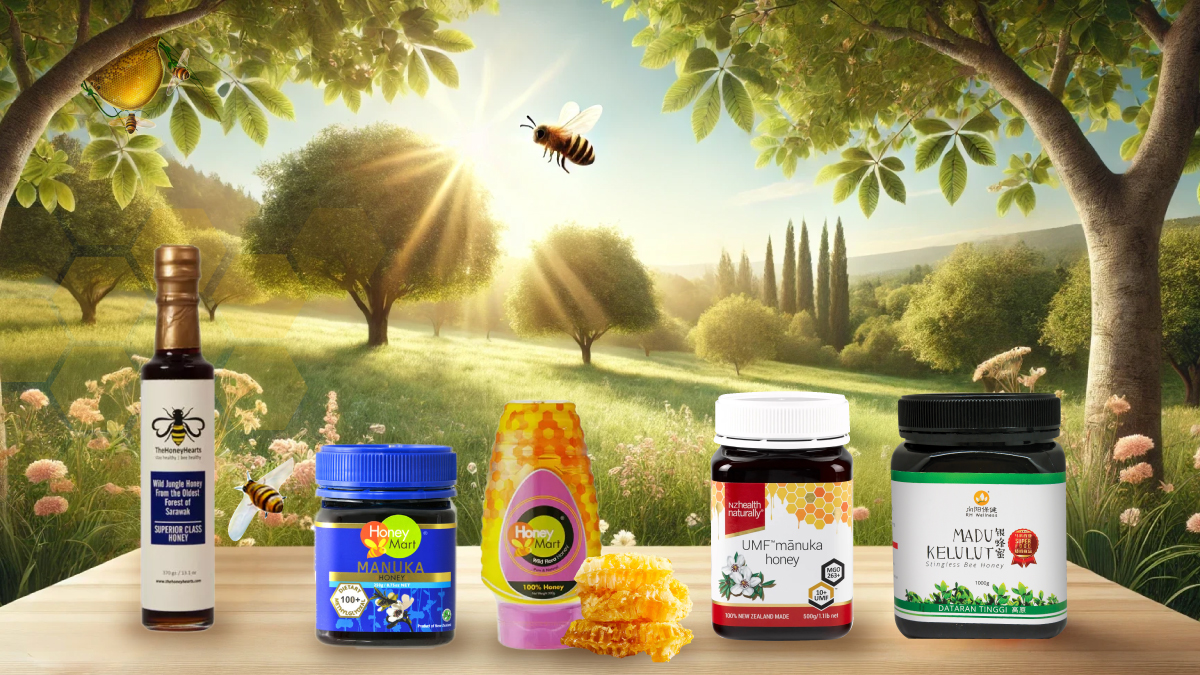
Popular Types of Honey and Their Characteristics
There are many different types of honey available on the market, each with its unique flavor and health benefits. Below are some common types of honey and their characteristics:
1. Longan Honey
Longan honey is a popular type of honey in southern China. This honey typically has a deep amber color and a rich floral fragrance. Longan honey is packed with minerals and vitamins and is known for its ability to soothe the lungs, relieve coughs, and regulate the digestive system. Its high sweetness makes it ideal for direct consumption or for use in baking.
2. Linden Honey
Linden honey is a special type of honey found in the northeastern region of China. It has a pale, delicate color and a subtle, light aroma. Because linden trees bloom for a short period, linden honey is relatively rare and thus more expensive. The flavor of linden honey is mild, and it contains a variety of nutrients that are particularly effective in relieving fatigue and promoting restful sleep.
3. Wildflower Honey
Wildflower honey is made from the nectar of a variety of flowers, resulting in a complex flavor with moderate sweetness and rich nutrients. Due to its diverse nectar sources, wildflower honey is typically more affordable but still offers significant health benefits, making it suitable for daily consumption and family health care.
4. Manuka Honey
Manuka honey, sourced from New Zealand, is globally renowned for its unique antibacterial properties. Manuka honey contains a compound known as MGO (methylglyoxal), which provides effective antibacterial and anti-inflammatory benefits. It is widely used in skincare, wound healing, and promoting digestive health. Although Manuka honey is more expensive, its medicinal value far exceeds that of most other types of honey.
5. Kelulut Honey
Kelulut honey is a relatively unique type of honey, produced by the famous small silver bees. Its nectar comes from rare plants such as silver willow. Kelulut honey typically has a very light silver-grey or pale yellow color and a smooth texture. Unlike other honeys, Kelulut honey has a sweet and slightly tangy flavor. This type of honey is rich in antioxidants, minerals, and flavonoids, making it highly effective in boosting immunity, providing antioxidant benefits, and hydrating the skin. Stingless honey is particularly suitable for those looking to enhance immunity and support daily health.
According to market statistics, in recent years, Manuka honey, longan honey, and Kelulut honey have seen growing demand in high-end markets. Consumers are increasingly seeking out these honeys for their unique nutritional value and health benefits, especially as the need for immunity-boosting, antibacterial, and antioxidant properties continues to rise.
Frequently Asked Questions (FAQs)
Q1: How can I ensure the honey I buy is genuine?
A: Consumers can verify honey’s authenticity through several methods, such as checking product certifications, conducting visual and taste tests, or purchasing from reputable brands. When buying honey, choose products that have been certified by a third-party organization to ensure their authenticity.
Q2: Why do some honeys crystallize while others do not?
A: Honey crystallization is a natural process, particularly in cooler environments. The crystallization process is related to the glucose content in honey. The higher the glucose content, the more likely the honey will crystallize. Not all honeys will crystallize, and crystallization does not indicate a decline in quality.
Q3: Do honeys sold on the market need to be certified?
A: High-quality honey is often certified as organic or for food safety, ensuring that no artificial ingredients or chemicals were added during production. Purchasing certified honey can improve its safety and reliability.
Q4: What are the main factors that affect the price of honey?
A: The price of honey depends mainly on its origin, harvest time, processing methods, and type of honey. Rare types of honey such as Manuka honey or linden honey are usually more expensive due to limited availability and unique health benefits.
Q5: Is honey suitable for people of all ages?
A: Honey is suitable for most people of all ages, but it is not recommended for infants under one year of age, as honey may contain botulinum spores, which can be harmful to babies' underdeveloped digestive systems. For everyone else, honey is a healthy natural sweetener that provides numerous health benefits when consumed in moderation.
Conclusion: The Wisdom of Choosing High-Quality Honey
In the honey market, the mixture of genuine and fake products poses many challenges for consumers when making a purchase. However, by understanding how to identify real honey and the factors that determine honey’s quality, consumers can make smarter choices when selecting high-quality honey. Whether through visual or taste tests or by understanding the honey’s origin, harvest time, and processing methods, consumers can better distinguish between high-quality and subpar honey.
As consumers, it’s essential to stay informed and cautious to ensure we purchase safe and healthy products. Choosing high-quality honey not only allows us to enjoy its delicious taste but also enables us to reap the full health benefits it offers.
If you are looking for premium and certified honey, visit Baizigui. We offer a range of high-quality, natural honey that is guaranteed to be pure and additive-free, allowing you and your family to enjoy nature’s gift. Contact us today to learn more about our special offers and become a loyal customer of Baizigui!

 Bahasa melayu
Bahasa melayu 中文
中文